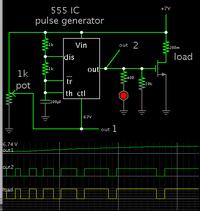
- Joined
- Apr 1, 2011
- Messages
- 15,813
- Helped
- 2,918
- Reputation
- 5,850
- Reaction score
- 3,071
- Trophy points
- 1,393
- Location
- Minneapolis, Minnesota, USA
- Activity points
- 118,416
But I thought that 80W is 80W no matter if it is produced with 1V*80A or 10V*8A?
Sounds like a problem in impedance matching, although even if it is not, indirectly it can lead to progress. Therefore say we want 80W going through a load of 0.2 ohm. It calculates as a 4V battery pushing 20A. (W = V^2 / R )
As a matter of fact we can expect there to be greater resistance than just the load. I suggest we add a 'guesstimate' of 0.2, for a total of 0.4 ohm. Now it calculates as a 5.6V battery pushing 20A. (W = V^2 / R).
This suggests you ought to use 2 batteries in series. Do they occupy the same space as 1 battery plus a boost converter? Probably.
Suppose you do some tests, by sending ordinary PWM through 2 batteries? This should be easy to control. Heat up the coil quickly with 100 percent duty cycle for a few seconds. Then reduce the duty cycle. See what temperature the coil is at. Such experiments will tell you a lot about the feasibility of your plan.








